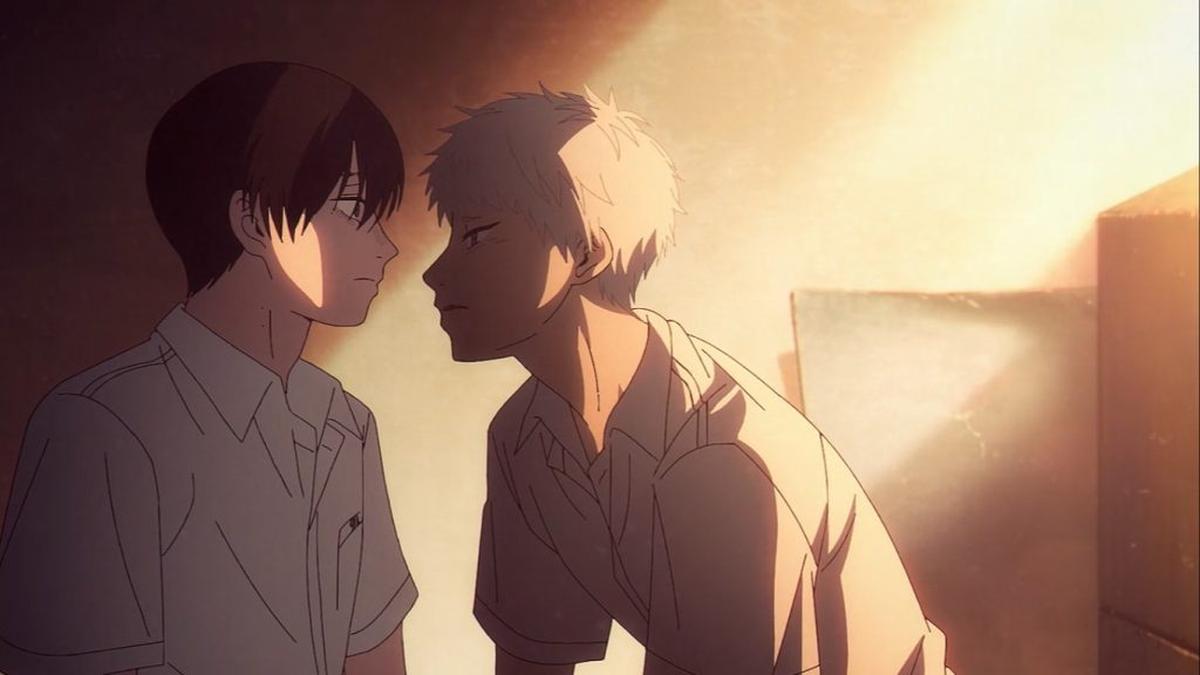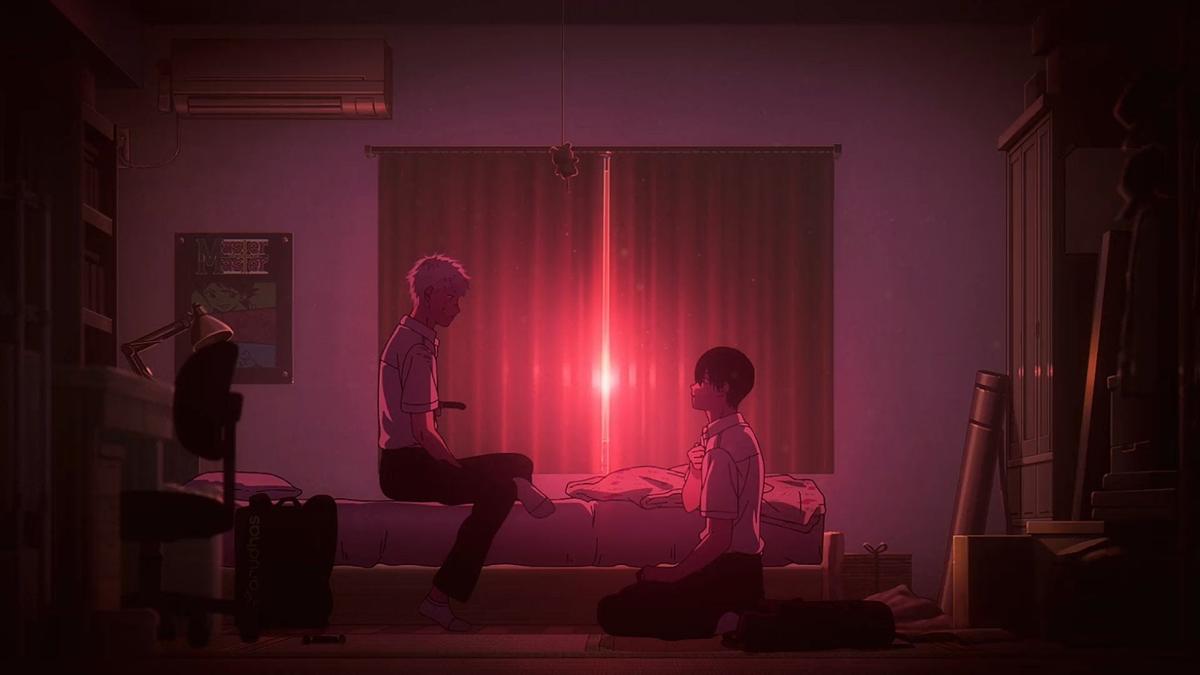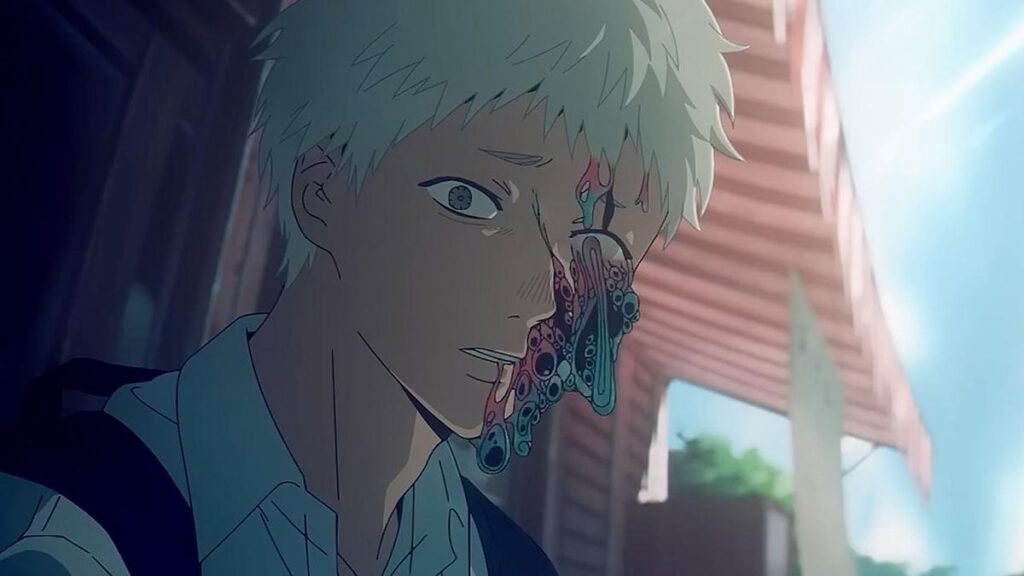970x125
In Kubitachi, a sleepy village caught in the slow boil of a Japanese summer, the world tilts imperceptibly off its axis. Considered missing for over a week, a silver-haired teenager Hikaru Indo walks down from the mountains one day, smiling as though nothing has happened. His best friend Yoshiki Tsujinaka looks at him and understands with horrifying clarity that this isn’t really Hikaru. Yoshiki doesn’t report anything because letting go of this creature would mean accepting that Hikaru is truly gone. It’s a terrible, selfish, utterly human choice, and The Summer Hikaru Died trusts us to live with his unbearable knowledge for the rest of the season. This is a story about living alongside something unspeakable because losing it would be so much worse.
970x125
The first thing you’ll notice about Netflix’s latest adaptation of Mokumokuren’s award-winning manga isn’t the monster but the light. It falls softly over rusting railings, the tilt of laundry in a lazy breeze and the shimmering of heat over rice paddies. These visuals are complemented with the perpetual hum of cicadas and Taro Umebayashi’s ethereal music. The landscape seems allergic to drama, let alone to malice, which makes the intrusion of something inhuman feel all the more profane.
Best known for the Umamusume franchise, CygamesPictures adapts The Summer Hikaru Died with a poise unafraid of stillness, in stark contrast to their signature work. Ryohei Takeshita’s direction is something to behold. His masterful orchestration of perspective, textures, and spatial composition is reminiscent of Twin Peaks in its gift for making the ordinary feel faintly poisoned. The series’ blocking and framing manipulate our gaze with subtle precision, crafting tension and intimacy in ways few series have dared this year.
The Summer Hikaru Died (Japanese)
Director: Ryohei Takeshita
Cast: Chiaki Kobayashi, Shuichiro Umeda, Yumiri Hanamori, Wakana Kowaka, Chikahiro Kobayashi, Shion Wakayama
Episodes: 12
Runtime: 25 minutes
Storyline: Six months ago, Hikaru vanished for a week. Now, as his best friend Yoshiki senses something amiss and confronts him, the harrowing truth emerges
The anime resists the temptations that ruin so many supernatural dramas. It does not explain its eldritch beings or its curses in comforting language. It borrows freely from Japanese rural ghost stories, but its Lovecraftian undertones are impossible to miss. The mythology lingers at the edges like inherited superstition, as something villagers don’t speak of because they no longer need to, and encounters with the occult stick to you like an oppressive, inescapable humidity.
Yoshiki is played with a muted ache by Chiaki Kobayashi. He moves through this world as if submerged in a fever dream, and his bone-deep grief trickles through his gestures in the way his shoulders never quite straighten, or how his voice thins when he says Hikaru’s name. Shuichiro Umeda layers faux-Hikaru with a slightly too-bright timbre, as if trying to remember what being human should sound like.

A still from ‘The Summer Hikaru Died’
| Photo Credit:
Netflix
The creature wearing Hikaru’s skin doesn’t always get the performance right. But it also touches Yoshiki’s arm the way Hikaru once did and calls his name with perfect inflection. The horror works precisely because it understands how tenderness can become a trap. What makes the story unsettling isn’t what Hikaru’s body contains but the way Yoshiki refuses to let it go. He knows this creature isn’t his friend, yet still makes space for it in his life. The human impulse to love even a ghost of someone familiar is neither celebrated nor condemned, but observed a patience that becomes the series’ signature.

The tenderness between the two boys fills every frame, and their bond carries the weight of teenage longing. Hikaru’s creature adores Yoshiki with an almost desperate intensity which Yoshiki always seemed to crave from the real Hikaru but never received. Their dynamic is a study in co-dependency, guilt, and self-erasure. The more Yoshiki refuses to let go, the more he becomes entangled in Hikaru’s malevolent reality.

A still from ‘The Summer Hikaru Died’
| Photo Credit:
Netflix
This is not a romance in the conventional sense, nor is it strictly horror. It inhabits a liminal space where love and dread breathe the same air. It manifests that special Luca Guadagnino brand of doomed tenderness we’ve witnessed in Call Me By Your Name, Bones and All, Queer, and even an anime like Banana Fish — that same tragic magnetism between two people who were never meant to find solace in each other.
The Summer Hikaru Died understands that queer adolescence is often an experience lived in the half-light between wanting and fearing to be seen. Hikaru’s demonaic presence becomes an allegory for that first, disorienting love that exhilarates and corrodes. The forests surrounding Kubitachi echo with that particular queer loneliness teenagers learn to domesticate, while the creature’s perfect imitation of intimacy mirrors the fragile performance of belonging that so many young queer folk perfect for survival. The “impurities” that trail them around town feel born of Yoshiki’s unspoken desire of wanting something he isn’t allowed to name. And so the horror grows from the dangerous realisation that love can make a monster feel like home.

There’s a strand of literature where the true terror comes through the erosion of boundaries between longing and delusion. The Turn of the Screw is a classic example of a world made unbearable by the possibility that what’s happening might in fact, be real, and this animebelongs to that lineage.
The Summer Hikaru Died is a remarkable study of how humans bargain with loss. In its final episode, the series distills desire and dread into a single, almost mischievous conceit: a boy, standing before a monster he loves, asking it to let him love back. And in that subversion it metastasises as a singular, unreplicable experience.
The Summer Hikaru Died is currently streaming on Netflix
Published – October 09, 2025 05:14 pm IST
970x125

